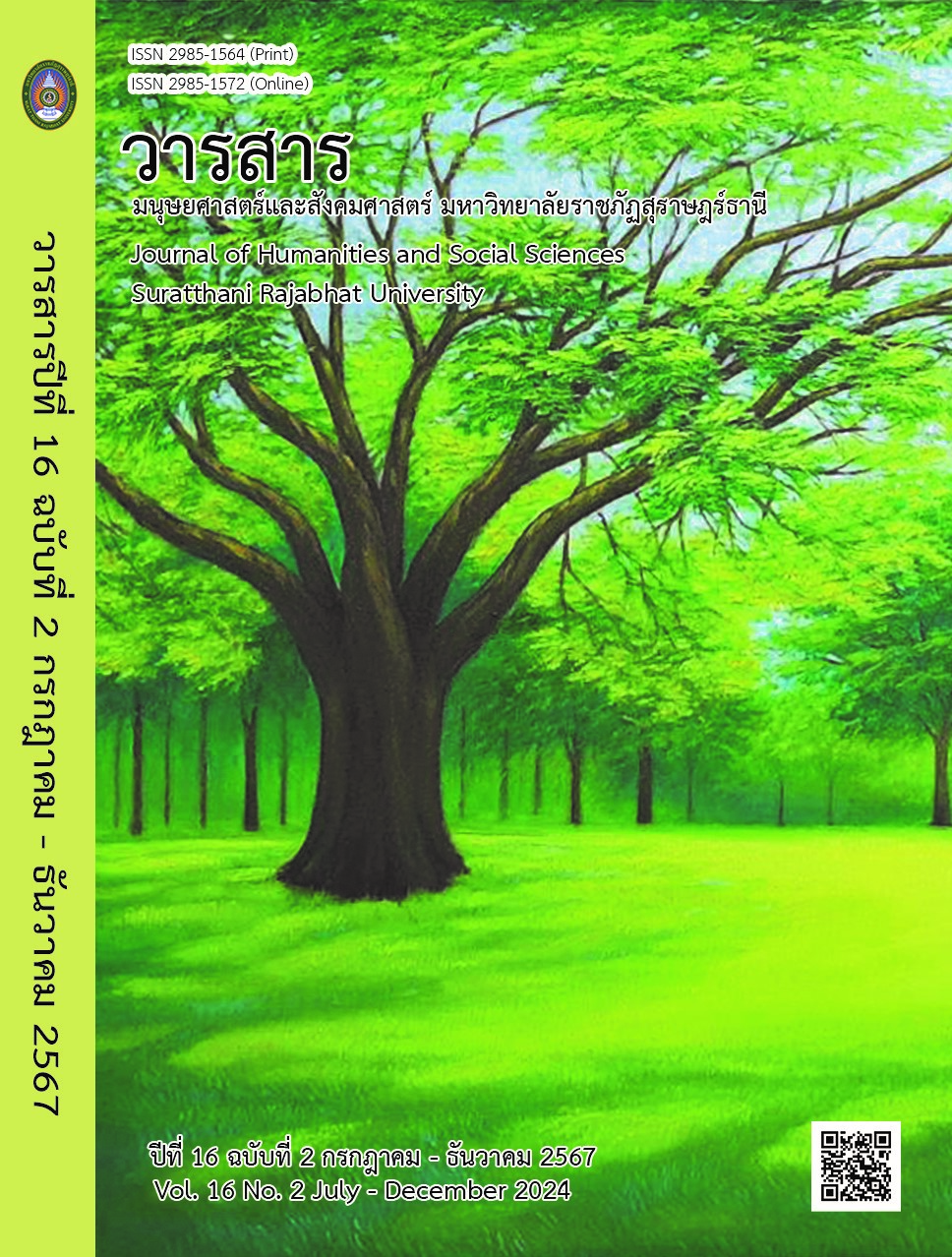The Guideline on Community Development Mechanism for Cultivation of Marijuana and Hemp and Production of Marijuana and Hemp Products: A Case Study of Dongmada Sub-district, Mae Lao District, Chiang Rai Province
Main Article Content
Abstract
This research article is based on a research project aiming to study the situation, problems, and obstacles in the cultivation of marijuana and hemp and to develop a guideline on community development mechanisms for the cultivation of marijuana and hemp and the production of marijuana and hemp products in the area of Dongmada Sub-district, Mae Lao District, Chiang Rai Province. The research used qualitative research methodology by in-depth interviews and focus group discussion among 18 key informants comprising government officers, civil society personnel involved in the promotion of marijuana and hemp cultivation, and agriculturists of marijuana and hemp farms by the presentation of content analysis research findings.
The research found that after the Ministry of Health’s Notification proclaimed that extract from every part of marijuana plants and hemp plants would not be the category five narcotics, agriculturists cultivated more excellent marijuana plants and hemp plants, especially the Virginia species and found that significant problems and obstacles included lack of collective formal meeting of agriculturists in the area, problem in the cultivation requiring high investment value and lack of knowledge of the cultivation. As a result, a guideline on community development mechanism for the cultivation of marijuana and hemp and the production of marijuana and hemp products in the area were in these following four ways: (1) Should encourage grouping of agriculturists as a community enterprise for production of marijuana and hemp products; (2) Should legislate to prohibit possession, sale and utilization of marijuana and hemp products for recreation; (3) Should provide research center to develop marijuana and hemp breeds in the community for medical use and (4) Should provide advertisement or publicity in order to get people aware of benefits from medical marijuana and hemp in Thai Traditional Medicine and to push relevant application with patients in the hospital.
Article Details

This work is licensed under a Creative Commons Attribution-NonCommercial-NoDerivatives 4.0 International License.
All published manuscripts have been verified by peer-peer professors in the fields of humanities and social sciences. Reprinting of the article must be authorized by the editorial staff.
References
โกวิทย์ พวงงาม. (2562). การจัดการตนเองของชุมชนและท้องถิ่น (พิมพ์ครั้งที่ 2).
นนทบุรี: ธรรมสาร.
ขวัญฤทัย ศิริพัฒนโกศล, และ นิฤมน รัตนะรัต. (2564). โครงการวิจัย การพัฒนา
ยุทธศาสตร์ทางเศรษฐกิจเพื่อเพิ่มรายได้ให้แก่ชาวไร่ยาสูบเพื่อเตรียมความ
พร้อมต่อการลดการบริโภคยาสูบของประชาชน. กรุงเทพฯ: สำนักงานกองทุน
สนับสนุนการสร้างเสริมสุขภาพ.
จักรพันธ์ เพ็ชรภูมิ, และ บุญชณัฏฐา พงษ์ปรีชา. (2560). การทบทวนวรรณกรรม “บ้าน
ปลอดบุหรี่”. วารสารก้าวทันวิจัยกับ ศจย., 9(3), 3-16.
เชียงใหม่ CM 108. (2565). สธ.เผยการปลดล็อกกัญชา กัญชง เพื่อใช้ในการดูแลสุขภาพ
สร้างเศรษฐกิจ และไม่่ใช้ในทางที่ไม่เหมาะสม. https://www2.rsu.ac.th/
clipping/2021/09062565164008_Event_ cm108.pdf
ณัฎฐกฤช รัตนบุรี, พีระพงศ์ ภักคีรี, และ ปิยะนุช เงินคล้าย. (ม.ป.ป.). กลไกการมีส่่วนร่วม
ในการจัดทำแผนพัฒนาชุมชน กรณีศึกษาพื้นที่ชุมชน เขตบางพลัด จังหวัด
กรุงเทพมหานคร. http://www.islocal.ru.ac.th/ pdffile/is61/61148800
ทัศนีย์ ปุวรัตน์. (2548). รายงานการวิจัยเชิงปฏิบัติการแบบมีส่วนร่วมโครงการเสริมสร้าง
และพัฒนาเครือข่ายยุติธรรมชุมชน จังหวัดเชียงใหม่. กรุงเทพฯ: กระทรวง
ยุติธรรม.
โพสทูเดย์. (2561). ยาสูบล้นสต๊อกถึงปี66เล็งให้เอกชนช่วยเกษตรกรรับซื้อแทน. https://
www.posttoday. com/economy/news/565848
รัฐบาลไทย. (2563). ยสท. พร้อมปรับกลยุทธ์ ต่อยอดธุรกิจ ผลิตกัญชง-กัญชาเชิงพาณิชย์
และพัฒนาที่ดินเพื่อเพิ่มรายได้อย่างยั่งยืน. https://media.thaigov.go.th/
uploads/document/142/2020/11/docx/Doc_20201112152924000000.
docx
รัฐบาลไทย. (2567). “คารม” เผย หากมีการพิจารณานำกัญชากลับมาเป็นยาเสพติดขอให้
พิจารณาครอบคลุมทุกด้าน หวั่นผลกระทบต่อผู้ปลูกและใช้กัญชาเพื่อรักษาโรค
ในช่วงปลดล็อก ย้ำกัญชามีส่วนดี. https://www.thaigov.go.th/news/
contents/details/83175
วิโรจน์ นรชาญ. (2562). การสร้างและพัฒนากลไกการเรียนรู้แบบมีส่วนร่วมสำหรับ
องค์กรชุมชน ในการจัดการปัญหาการบริโภคยาสูบ ตําบลหนองไผ่ อําเภอ
ธวัชบุรี จังหวัดร้อยเอ็ด. วารสารอนามัยสิ่งแวดล้อม และสุขภาพชุมชน, 4(3),
-118.
สมบัติ ท้ายเรือคำ. (2556). การวิจัยและพัฒนา: วิธีการวิจัยเพื่อพัฒนางานวิจัย. วารสาร
วิจัยเพื่อพัฒนาสังคมและชุมชน มหาวิทยาลัยราชภัฏมหาสารคาม, 1(1), 2-11.
เสียงท้องถิ่น. (2566). สุดทน! ชาวไร่ยาสูบขอเปลี่ยนอาชีพ โควต้าถูกลด ต้นทุนสูง รับซื้อ
ราคาถูก. https://www.siangthongthin.com/news/828
สำนักงานเกษตรและสหกรณ์จังหวัดเชียงราย. (2564). จดหมายข่าวพิรุณเชียงราย: ปลูก
กัญชงเชียงราย... ตั้งเป้าปีแรก 1.6 พันไร่ เพิ่มเป็นแสนไร่ใน 5 ปี. https://www.
opsmoac.go.th/chiangrai-news-files-432791791061
สำนักงานคณะกรรมการป้องกันและปราบปรามยาเสพติด. (2564). แผนปฏิบัติการด้าน
การป้องกันและปราบปรามยาเสพติด พ.ศ.2565. กรุงเทพฯ: กระทรวงยุติธรรม.
สำนักงานเลขาธิการคณะกรรมการส่งเสริมวิสาหกิจชุมชน. (2566). วิสาหกิจชุมชนน่ารู้.
http://www.sceb.doae.go.th/Ssceb2.htm#ความหมาย
เสาวลักษณ์ คำมุลตรี. (2566). รายงานวิจัย ประสิทธิผลโครงการปลูกกัญชาเพื่อประโยชน์
ทางการแพทย์โรงพยาบาลส่งเสริมสุขภาพตาบล ในจังหวัดนครพนมร่วมกับ
วิสาหกิจชุมชนเพ่ือเศรษฐกิจทางเลือกจังหวัดนครพนม. https://skko.moph.
go.th/dward/document_file/oa/research_file_
name/20230826114920_988255122.pdf
อรรถพล ใหญ่สว่าง. (2557). หลักนิติธรรม. วารสารจุลนิติ, 11(1), 33-58.
AMARIN. (2566). สถิติ 6 เดือนหลังปลดล็อกกัญชา พบผู้ป่วยติดกัญชาเพิ่มขึ้น 282 เคส/
เดือน. https://www.amarintv.com/spotlight/business-marketing/
detail/39269
LAW for ASEAN. (2563). สหประชาชาติถอดถอนกัญชาออกจากบัญชีสารเสพติด
อันตรายร้ายแรง. https://lawforasean.krisdika.go.th/Content/
View?Id=823&Type=1
WARISARA KHEMKLAD. (2563). ทำความรู้จัก Cost Reduction เทคนิคการลดต้นทุน.
https://www.pantavanij.com/th-develop-a-cost-reduction-strategy-
for-your-brand/


